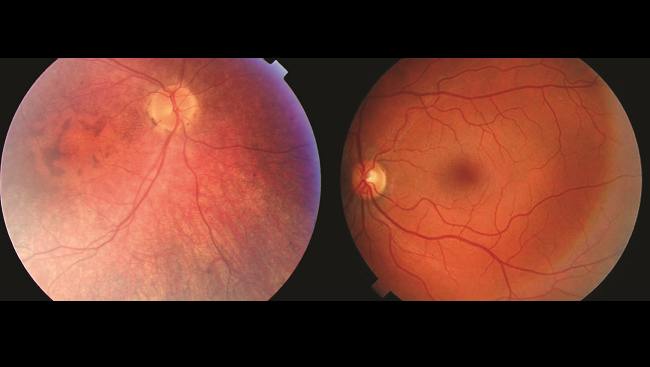Animal Research Success: Blindness and the Retina
- Published9 Mar 2012
- Reviewed9 Mar 2012
- Author Emily K. Dilger, PhD
- Source BrainFacts/SfN
Leber congenital amaurosis (LCA) is an inherited disease that causes almost complete blindness in infants. It affects three in 100,000 newborns worldwide. Research on dogs has enabled scientists to develop a potential cure that could someday restore vision to people – and dogs – with LCA.
Retinal photographs show how the eyes of a healthy patient (right) and an individual with Leber congenital amaurosis (LCA; left) differ. The LCA eye shows retinal thinning and abnormalities of the macula, which in the healthy eye is the central darkened spot. The LCA eye also shows reductions in vascular tissue, the eye’s blood supply.
One of the most common causes of LCA is a mutation in the RPE65 gene, which is also prevalent in a strain of dogs called Briards. The gene codes for an essential protein for vision.
However, the disease does not affect all of the photoreceptors, the light sensing cells, so the eye still has the capacity to detect light. Scientists took advantage of the healthy photoreceptors in Briard dogs and injected a virus carrying copies of the normal RPE65 gene. This virus was chosen because it did not make people or dogs sick.
Instead, the virus allowed the photoreceptors to make RPE65, restoring vision in the dogs. In 2007, scientists at three different institutions initiated Phase I/II clinical trials for people with LCA caused by a mutation in REP65. Preliminary results indicate that the gene therapy restored partial vision to affected people. This ongoing research will no doubt benefit Briard dogs as well.
CONTENT PROVIDED BY
BrainFacts/SfN
Also In Archives
Trending
Popular articles on BrainFacts.org


















